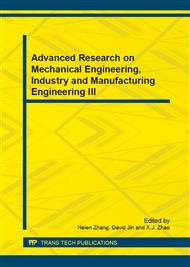p.421
p.425
p.429
p.434
p.438
p.442
p.447
p.455
p.459
A Hybrid Ant Colony Optimization Algorithm for Permutation Flow-Shop Scheduling in Manufacturing Systems and Industrial Process
Abstract:
This paper presents a novel hybrid ant colony optimization approach (ACO&VNS) to solve the permutation flow-shop scheduling problem (PFS) in manufacturing systems and industrial process. The main feature of this hybrid algorithm is to hybridize the solution construction mechanism of the ant colony optimization (ACO) with variable neighborhood search (VNS) which can also be embedded into the ACO algorithm as neighborhood search to improve solutions. Moreover, the hybrid algorithm considers both solution diversification and solution quality. Finally, the experimental results for benchmark PFS instances have shown that the hybrid algorithm is very efficient to solve the permutation flow-shop scheduling in manufacturing engineering compared with the best existing methods in terms of solution quality.
Info:
Periodical:
Pages:
438-441
Citation:
Online since:
August 2013
Authors:
Price:
Сopyright:
© 2013 Trans Tech Publications Ltd. All Rights Reserved
Share:
Citation:


